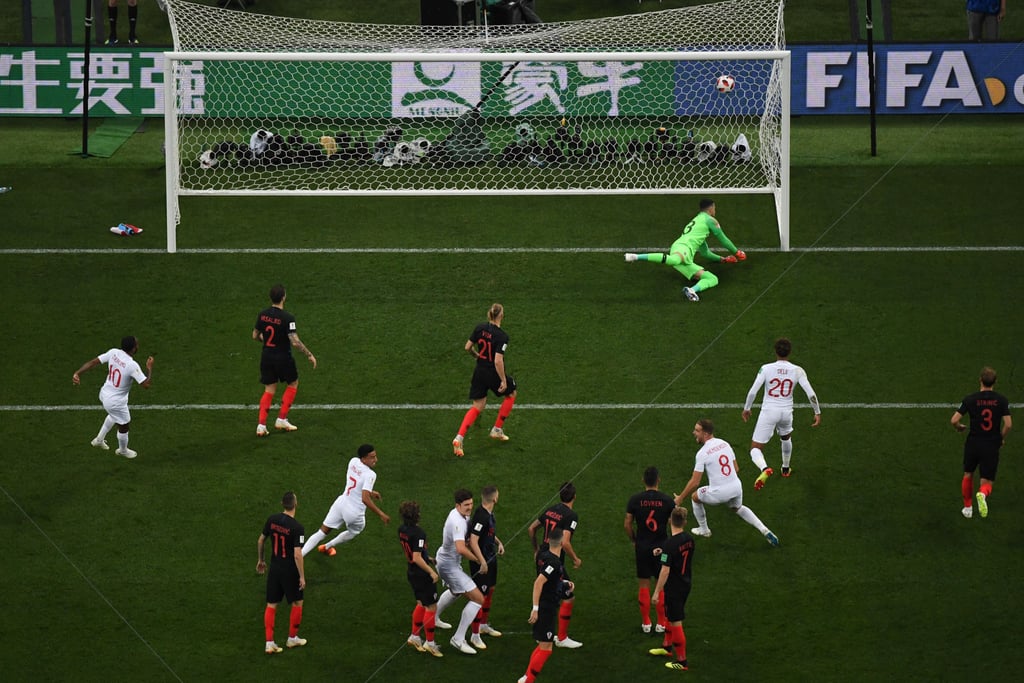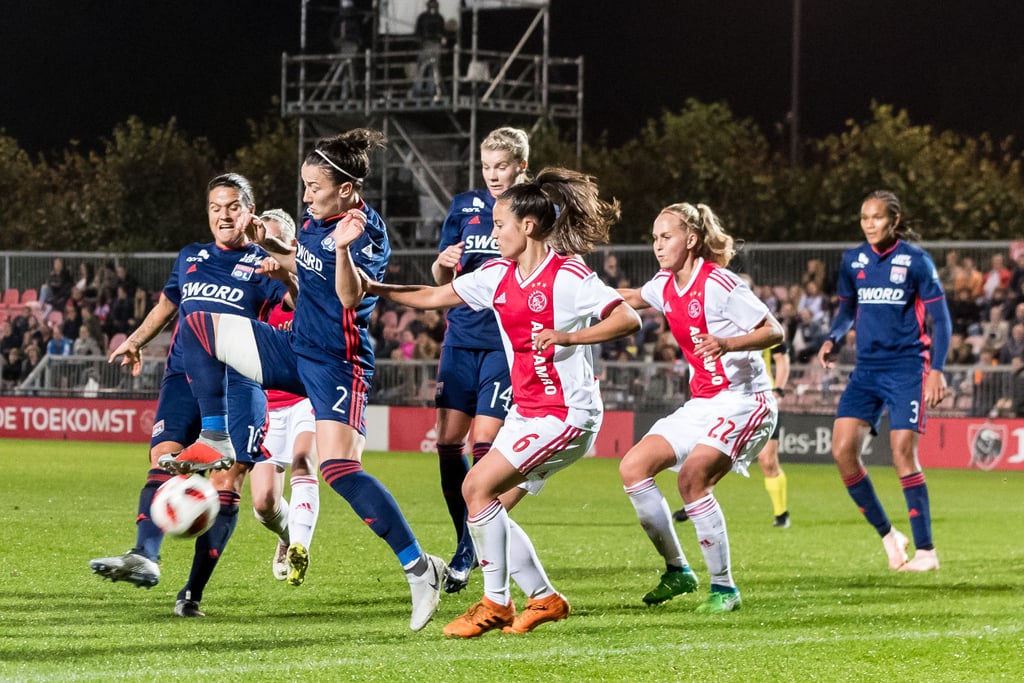Football is the world's most popular sport, so it's no wonder that the World Cup is one of the biggest events, with both the men's and women's tournaments drawing huge crowds every four years. For the most part, international men's and women's football games are pretty much the same (including all the rules), so to a casual watcher, the men's and women's World Cups won't look too different on the surface. However, nothing is entirely equal, right? There are a handful of discrepancies between the men's and women's World Cups that range from minor to serious — including some details that can affect the players' performances.
The most recent men's World Cup took place in Qatar from 20 Nov. to 18 Dec., 2022 (with a total of 64 total games between teams from all over the world), but the next FIFA Women's World Cup [1] is coming up fast, taking place in New Zealand and Australia from 20 July to 20 Aug. As you're getting excited to see the Lionesses play, you may be curious about the differences between the men's and women's World Cups.
Keep reading to learn about five things that differentiate the men's and women's World Cup tournaments — and how much they matter.
— Additional reporting by Sara Youngblood Gregory and Lauren Mazzo
The Men's World Cup Has Been Around For a Lot Longer
For starters, the men's and women's World Cups have been around for very different amounts of time. The inaugural men's World Cup took place in Uruguay in 1930 [3], with Uruguay winning the championship and Argentina, the US, and Yugoslavia placing respectively afterward. The women's World Cup is much younger, with the first tournament taking place in China in 1991 [4], which was won by the United States team (pictured). Therefore, the women's tournament is just about 32 years old, while the men's is looking towards its 100-year anniversary in 2030.
Both World Cup tournaments are played approximately every four years. That means there have been 22 instalments of the men's World Cup, but only been eight of the women's World Cup; the upcoming 2023 Women's World Cup is the ninth.
The Men's and Women's World Cups Are Played on Different Turf — Literally
Historically, the ppitch has quite literally been different for the men's and women's World Cups. Men's World Cups are played on natural grass, but the women's tournaments have often been relegated to artificial turf. On the surface, it might seem like a simple cost-cutting measure (artificial turf is cheaper to maintain than grass), but the different turf can actually make a difference for the players. In 2015, some players filed a complaint on the grounds of gender discrimination [5] with the Human Rights Tribunal of Ontario over that year's World Cup in Canada, though it was eventually withdrawn. The players attested that turf is less forgiving than natural grass and that it can impact play because of concerns over injury as well as ball handling.
In 2014, forward Alex Morgan explained some of the negative side effects of playing on artificial turf to USA Today [6], saying: "Not only are there long-lasting injuries, but there are long-term effects of playing on turf. The achiness, taking longer to recover than on natural grass, the tendons and ligaments are, for me at least, I feel more sore after turf. It takes longer to recover from a turf field than natural grass."
However, change is officially at hand as FIFA forbid artificial turf [7] in 2019. The upcoming women's World Cup in 2023 will be the first played on a natural grass field.
The Prize Money Is Significantly Different at the Men's and Women's World Cups
Yes, the gender pay gap exists in elite sports. The FIFA World Cup Qatar 2022 prize money amounted to a whopping $440 million: all qualifying teams received $1.5 million ahead of competition, the champions (Argentina) won $42 million, runners-up (France) won $30 million, and all contenders who placed in the top 32 went home with at least $9 million per team. (You can find the full breakdown for the men's World Cup prizes on FIFA's site [8].)
The women's teams, like in most professional sports, earn only a fraction of their men counterparts [9]. In 2022, the US Women's National Football team settled a lengthy gender-discrimination lawsuit [10] filed by star players Carli Lloyd, Hope Solo, Alex Morgan, Megan Rapinoe, and Becky Sauerbrunn, alleging they were paid thousands of dollars less than their men counterparts, despite better playing performance. As a result, the US Football Federation reached a historic equal-pay agreement [11]: not only will the men's and women's teams be paid equally until at least 2028, but the women's team will be paid $22 million in back pay (i.e. lost wages).
But the FIFA Women's World Cup prizes certainly fall short of equal pay — even with the 2023 prize pool reaching a historic high. In March, FIFA announced [12] that a total of $152 million will be awarded in prize money at the tournament, which is a shocking five times the amount that was given out at the last women's World Cup in 2019 ($30 million). The winners of the 2023 trophy will go home with $4.29 million and the runners-up with $3 million. Though still a shadow of what the men's World Cup players earn, it's at the very least a step in the right direction.
Historically, More Teams Go to the Men's World Cup Than the Women's
The men's 2022 tournament had a total of 32 qualifying teams, all starting in eight different groups of play, per FIFA [13]. Meanwhile, the 2023 World Cup will be the first time that 32 nations compete [14] for in the women's tournament — up from the original 12 teams at the tournament's founding in 1991, and again from 2015's 24 teams.
The Men's World Cup Has Higher Viewership Than the Women's World Cup
The final match of the 2022 men's World Cup had more than 1.5 billion viewers worldwide. FIFA estimates [15] that around five billion people engaged with the tournament as a whole, including viewing content across an array of platforms and devices.
Meanwhile, the final match of the most recent women's World Cup in 2019 garnered 260 million views worldwide, according to FIFA [16]. The tournament as a whole had 1.12 billion worldwide viewers "on TV at home, on digital platforms, or out-of-home."
Those numbers were record-breaking at the time, but the 2023 tournament is poised to shatter the ceiling yet again. CBS reported [17] that there have already been record-breaking ticket sales for this year's women's tournament, and new TV rights deals [18] point toward more viewership and exposure. In general, 2023 is seeing unprecedented momentum and support behind women's sports.






